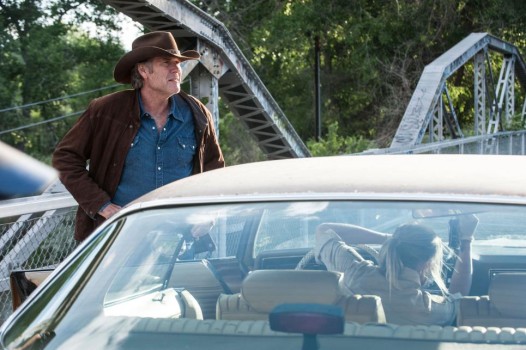
Crime drama series Longmire has been cancelled due to its predominantly senior audience demographic.
Whenever our number is called by a political pollster, the person on the other end of the line usually asks with what party affiliation I’m registered to vote, then whether I’m over 65 or 70, and signs off, saying, “Thank you. The poll is concluded.”
We both know that’s not true, that she — it’s usually a young woman— has been told nobody wants to hear the opinions of a senior.
I’m slightly offended, but just as glad to call it off anyhow, as pollsters often ask questions about matters and candidates I’ve not had time to consider. I’m not talking about Mary Landrieu or Bill Cassidy, though; goodness knows we’ve heard a lot from both of them already.
I got to thinking about that the other day when I read this headline in the Wall Street Journal: “Sorry we canceled your favorite TV show; you’re too old.”
It seems that A&E cable network will no longer air Longmire, a Western/detective series starring a man who’s probably in his late 50s or early 60s, because although the show attracts a large number of viewers, they’re not in the right age group. Old folks don’t spend enough money, don’t switch to brands being advertised, say those who sponsor series such as Longmire and Harry’s Law, the latter, once my particular favorite.
5.6 million of us codgers and biddies watched Longmire, so you’d think they’d find another channel for it, even if they have to advertise Depends or aluminum walkers or pills for back pain once or twice during showtime. Commercials for good wines and good books and wrinkle cream and Viagra would work, too.
All this is really nothing new: the networks have long sought to attract viewers of around 34 years of age. Then cable and premium channels joined them. But what I noticed beginning to happen six or seven years ago was the amount of cleavage displayed by the female stars on primetime network shows. I used to watch Without a Trace, and the necklines on the cute blonde — acting out the part of an FBI agent — just got lower and lower; soon, the wardrobe of nearly every actress in other networks’ detective and medical shows joined the race to prove how much the women could safely reveal.
And the leading men in many of the network programs have been seriously homely — middle-aged men in suits playing opposite all this cleavage. That makes you wonder whether TV programmers even value the viewership of young women.
The prioritization of men is evident on cable news. Have you checked out the bimbos reading the headlines? They’ve also joined the cleavage competition, and sometimes — if the camera passes over a corner of the desk — give us a glimpse of the sight of a short skirt hiked up to the thigh.
The premium TV channels, of course, are over the top when it comes to paying special attention to the viewing pleasure of 21st century youngsters. Shows like The Sopranos and Rome offered plenty of sex and nudity. But I didn’t see much for the gals in the former: Glimpsing Carm and Tony and anyone else he chose to pair with making out was no treat; Mr. America he wasn’t, and he got fatter and fatter as the series went on.
But it’s time for me to move on; I’m a marginalized senior, and better just face it — a feminist who’d rather not see women viewed entirely as sex objects, a TV viewer who liked Longmire and a columnist who found something to write about.
 NOLAbeings Multimedia artist Claire Bangser created NOLAbeings as a portrait-based story project that marries...
NOLAbeings Multimedia artist Claire Bangser created NOLAbeings as a portrait-based story project that marries...  Voodoo in New Orleans: Reviving history: New Orleans fortune telling This article takes a deep dive into the history of Voodoo in New Orleans, its hybridization with Catholicism, and its present-day place in the city's culture. The author visits fortune-tellers in the French Quarter, using their guidance as a tool for introspection rather than a deterministic predictor of the future. Through her experiences in New Orleans, the author feels a mystical connection to both the past and the future.
Voodoo in New Orleans: Reviving history: New Orleans fortune telling This article takes a deep dive into the history of Voodoo in New Orleans, its hybridization with Catholicism, and its present-day place in the city's culture. The author visits fortune-tellers in the French Quarter, using their guidance as a tool for introspection rather than a deterministic predictor of the future. Through her experiences in New Orleans, the author feels a mystical connection to both the past and the future. 